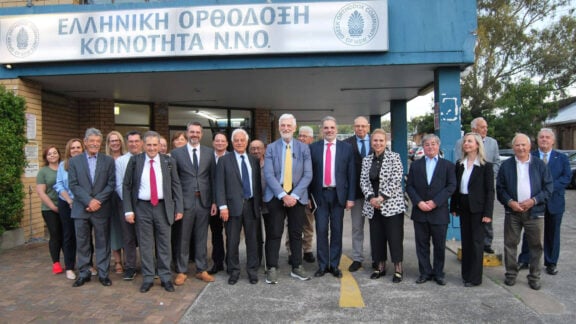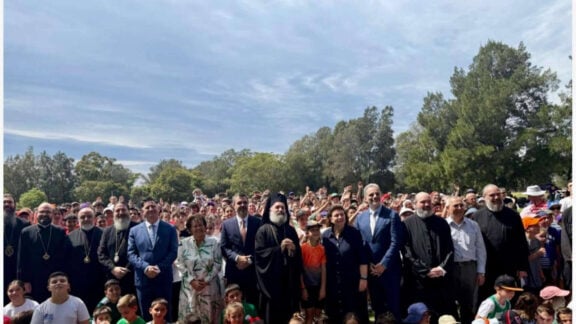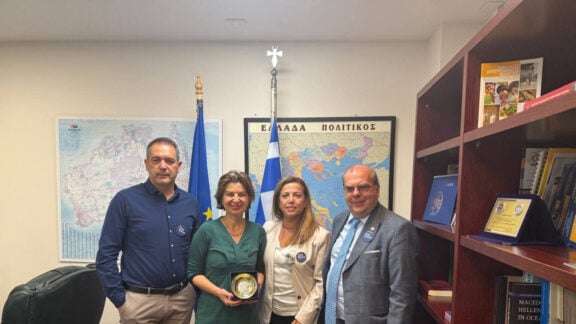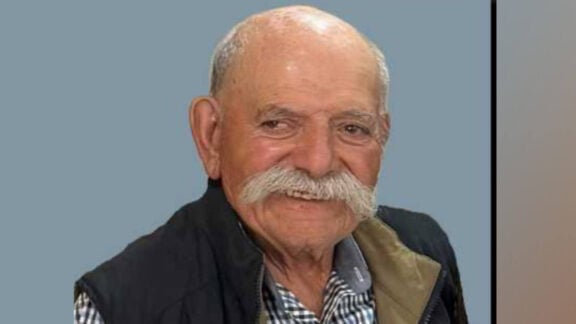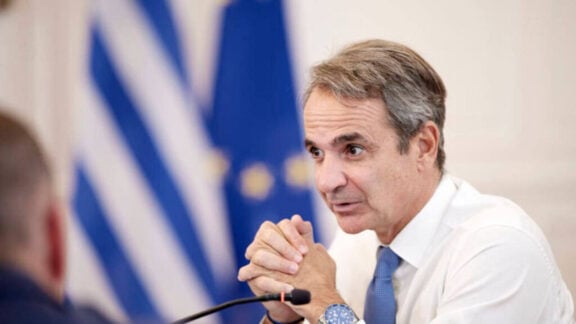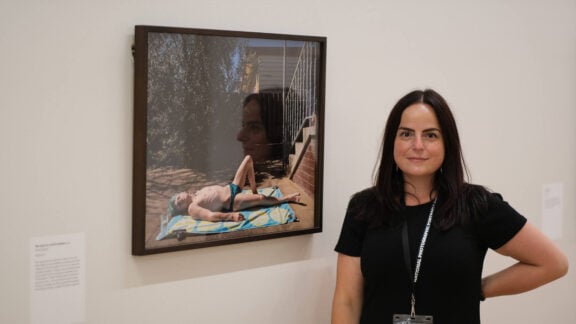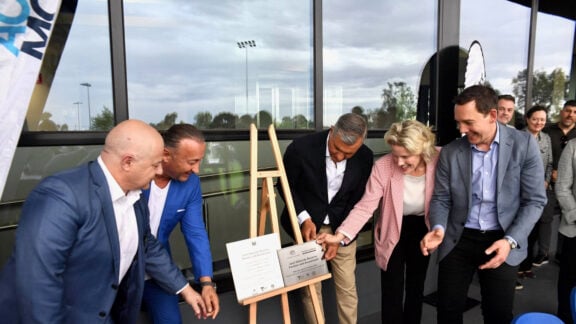With Saturday marking Australia Day, people will be preparing to take part in citizenship ceremonies across the country.
Believe it or not, prior to 1949 such ceremonies were not yet a thing. In fact, there was no such thing as an Australian citizen, given that the Australian Citizenship Act was yet to be passed until 1948.
Rather residents were considered British subjects, unless they held passports from another country, in which case if they wished to show their allegiance to Australia, were required to be naturalised as a British subject.
The first ceremony took place on 26 January, 1949 in Canberra, which saw then Prime Minister Ben Chifley become the first Australian citizen. The next seven people who were granted citizenship on 3 February that same year were all men, each from a European background. Among them was a Greek by the name of Michalos Mavrokefalos.
A 34-year-old cafe proprietor in Melbourne, he migrated to Australia from Greece before WWII, having served with the 6th Employment Company of the Australian Military Forces.
According to historian Leonard Janiszewski, the offer to become an Australian citizen essentially developed out of necessity after the war. A case of “populate or perish”, he says naturalisation, as well as opportunities to acquire land, property, and to build up the material means to establish a family, were deemed by the government as a sure way of ensuring people stayed in the country.
“Given what the Greeks had gone through during the first part of the 20th century, given the various wars – the Second World War, and then the Civil War, this country gave them a hell of a lot of opportunity,” Janiszewski says.
As part of the naturalisation process, a declaration would be put in the main local newspaper of the city the individual lived in, indicating their intention to be naturalised. This would then be followed by an ‘investigation’ as to whether or not they were suitable, i.e. if they had a criminal record or not.
“The Greeks, when they adopted naturalisation, they transferred from migrants to settlers because once you do that act, your future is then with this nation,” Janiszewski explains.
“That doesn’t mean that you’re letting go of your customs and values in terms of your Hellenic background, but it does make the statement that ‘I am here, and I am here to stay, and this is where the future of my family is.'”
Given 1949 was still in the context of the White Australia Policy, the historian says it’s important to note that all the men first naturalised were European, and that by undergoing the process were essentially making the claim that “they are white … and indicating that they want to be part of the mainstream”.
To further demonstrate this, as part of his own naturalisation process, Mavrokefalos chose to change his name to Black, which according to Janiszewski, who together with photographer Effy Alexakis has been documenting the history of Greek Australian owned milk bars and cafes, was a trend, namely prior to 1945.
“For those particularly in business, it was far better within the context of British Australian society to have a name like Black, which was easier on the tongue. Even though when you look at the person they might seem a little different, it is less questioning; an affiliation of ‘well I am part of what you actually are’,” he explains.
The motivation behind changing one’s name is loaded however, ingrained in the local mentality that British western culture was a superior form of cultural development, and that anything else was less so – something that is still seen with newly arrived migrants to Australia today.
All seven men, including Mavrokefalos, have since passed away.
“It would be wonderful if there was a call out to find out if there are descendents of Mavrokefalos; I’m assuming that there would have been, but we don’t have any information on him whatsoever.”
If you are a descendent of Michalos Mavrokefalis Black, know someone who is, or have any other information about him, please send an email to anastasia@neoskosmos.com.au
* Neos Kosmos has contacted the National Archives of Australia for further information.
